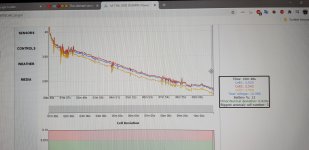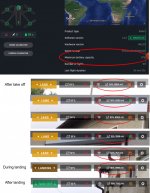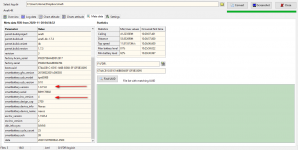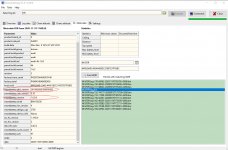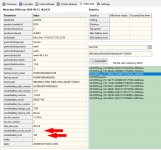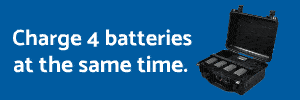What you should know about Anafi batteries:
In summary:
% Values may vary for Anafi. These values are only valid for new and faultless batteries.
Voltage values, on the other hand, are important! These show its true state.
- Type of LiHV is a high voltage Lithium polymer
- 2 cells / battery = 2S (2 are connected in series)
- Max. capacity 2700mAh
- Max. cell voltage 4.35V / cell 8.7V / package (LiPo 4.2V 8.4V / package)
- Nominall voltage 3.8V / cell (LiPo 3.7V / cell) 7.6V / pack (LiPo 7.4 / pack)
- Min. voltage (below which it is severely damaged) 3.2V / cell 6.4V / package (this is also the voltage of the Anafi cut-off)
- Recommended maximum discharge is 80% of the total capacity (2700-80% = 540mAh) then approx. 3.65V / cell 7.3V / pack remains in the battery.
- So it is advisable to land by at least 20%, then the lifespan will not be significantly reduced. Under 3.5V / cell 7V / package, harmful processes are already accelerated.
- If it is still below 20%, it is recommended to charge it to at least 60-65% 3.8V / cell (7.6V / pack) within 20 minutes (For example with a powerbank, on the spot)
- Charging according to 1C (2700mAh x1) max. With 3A. As the internal temperature has a negative effect on the service life, it is recommended to charge less (2A mobile phone charger) or the USB socket of the computer.
- Storage 3.8V / cell (7.6V / pack) at 62-65% in a cool dry place
- It is not recommended to leave it in a fully charged state, even if the built-in smart circuit automatically discharges to a 65% charge level. This few days of 100% charge also has a detrimental effect on longevity.
- Life life 200-150 cycles (but only if always done according to all specifications), shorter than 300 cycles of LiPo
- According to some sources, it is recommended to discharge only up to 50% during the first 5 cycles (this initiation)
- Its internal resistance (IR) increases continuously during aging (anode, cathode oxidation), therefore an increasing proportion of the transmitted and absorbed energy is converted into heat and therefore its capacity decreases. 6-7 mohm is still a good value, needs to be replaced above 20 miliohm.
In summary:
- max. 4.35V (8.7V) 100%
- nominal and storage: 3.8V (7.6V) 65%
- min. safe: 3.6V (7.2V) 20%
- absolute min. (shutdown) 3.2V (6.4V) 0-2%
% Values may vary for Anafi. These values are only valid for new and faultless batteries.
Voltage values, on the other hand, are important! These show its true state.
Last edited:



